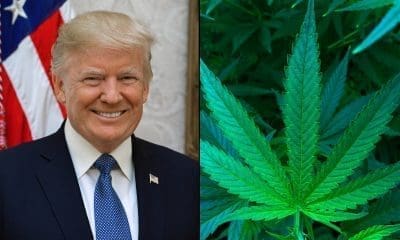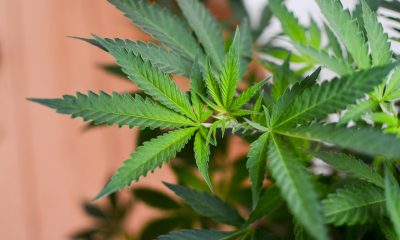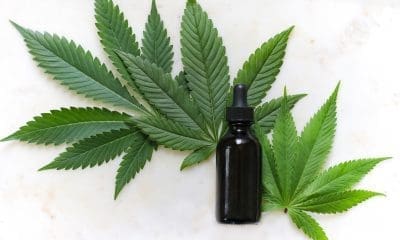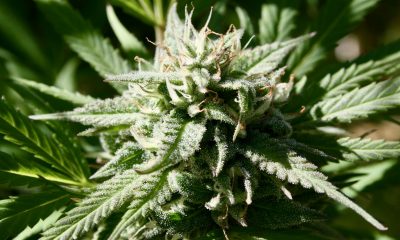Politics
How Virginia’s Competing Marijuana Sales Bills Differ On Licensing, Equity, Taxes And More
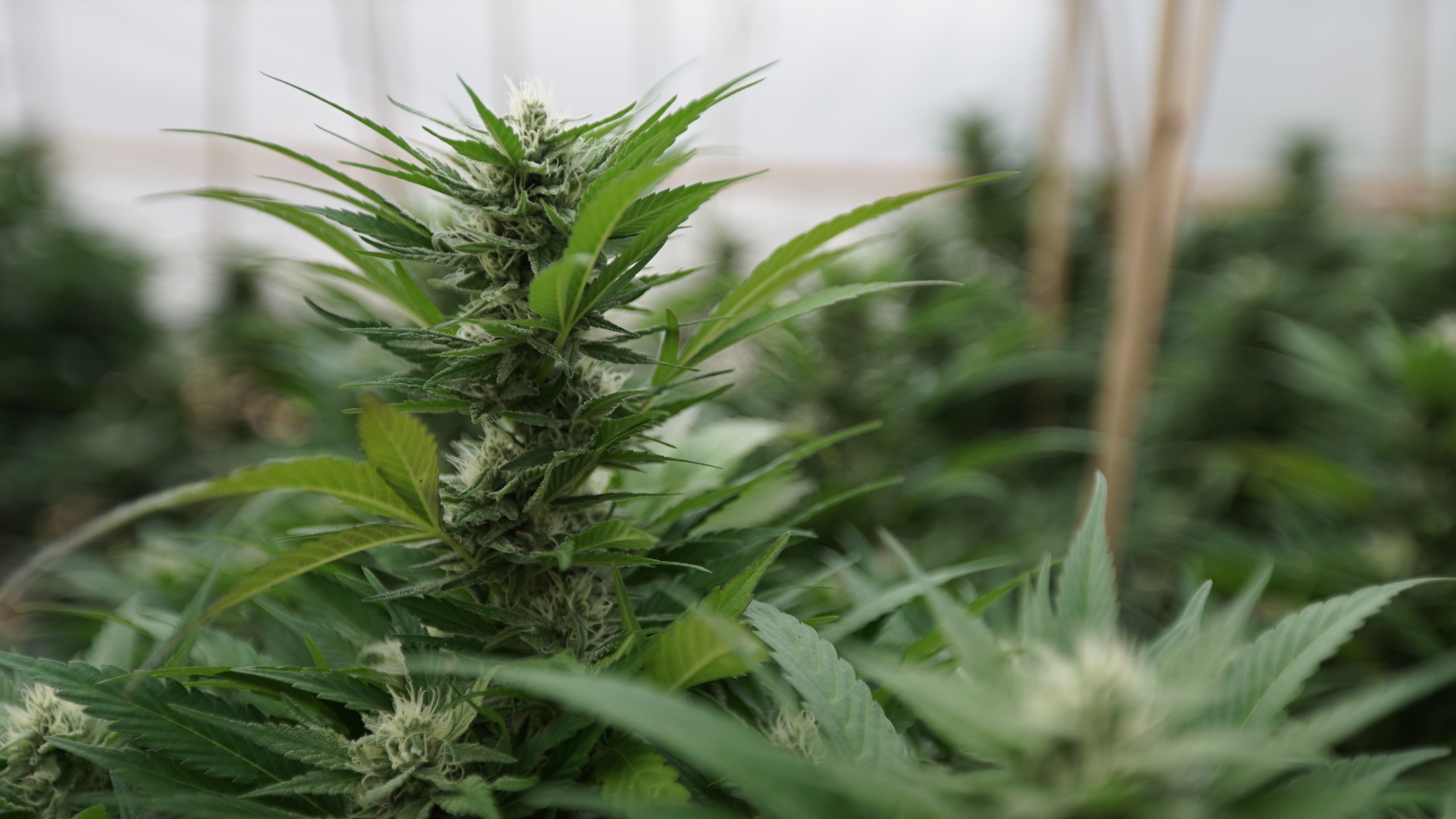
Two different bills to legalize and regulate retail marijuana sales in Virginia cleared a key a crossover deadline last week, increasing hopes among advocates that lawmakers can find consensus on launching a regulated market and send implementation legislation to Gov. Glenn Youngkin (R).
The road to the two measures in their current form has been winding, arguably beginning in 2021, when the state legalized cannabis use and possession. The legislation that passed that session also included a framework for legal sales, but Republicans, after winning control of the House and governor’s office later that year, subsequently blocked the required reenactment of those provisions, leaving consumers with no legal way to purchase products. In the interim, illicit stores have sprung up to meet consumer demand.
Democrats have since retaken control of both chambers of the state legislature, spurring renewed efforts among lawmakers and key stakeholders—including consumer advocates, justice groups, existing medical marijuana operators and small businesses—to push a measure through.
Last week both the House of Delegates and Senate approved HB 698 and SB 448 respectively, sending the measures to the opposite chambers.
Both bills would launch legal, regulated marijuana sales beginning in 2025, though they differ in timing and which operators would be able to open when—details that have at times caused rifts and shifted alliances among advocates. The measures also differ in their approaches to social equity and redressing past drug war harms, criminal penalties around marijuana activity going forward and even whether commercial cannabis could be legally grown outdoors in one of the nation’s leading tobacco-producing states.
As the two measures now head to the opposite chambers, many expect lawmakers to make further amendments, bending each bill back toward priorities already expressed during the first half of the session. But advocates are nevertheless optimistic that the progress so far bodes well for passing a retail sales bill this year.
Here are some of the key ways the two bills differ in their approach to regulated cannabis sales:
- Priority licensing: The House bill would allow some licensees to open sooner than other applicants. Specifically, it would let medical marijuana operators, up to 60 equity-focused microbusinesses and up to five hemp businesses to begin legal sales on January 1, 2025, while other operators would have to wait until July 2025 to obtain licenses. The Senate bill, by contrast, would not allow any group of retailers to have an early start on sales.
- Timing: Under the House bill, some retailers would be able to open retail marijuana stores on January 1, 2025, with licensing of eligible businesses beginning in July of this year. Licensing of other retailers, however, would not begin until July 2025. The Senate bill would also begin licensing stores as soon as July of this year but would not allow retail sales to begin until after January 1, 2025.
- Social equity: Both bills have provisions that provide some advantage to people from so-called “historically economically disadvantaged areas” that have been disproportionately policed for marijuana in the past. But the House measure includes specific provisions that would prioritize licensing of people with past cannabis convictions, as well as their family members. The House measure would also provide $400,000 in startup capital, as well as other business support, to each of 30 equity-owned microbusinesses. Medical marijuana providers would be required to pay those funds to microbusinesses in order to be eligible to open for sales in January.
- Tax rates: The House bill would tax marijuana at a rate of up to 9 percent, split between state and optional local taxes. The Senate bill would create a maximum tax rate of nearly double that—17.5 percent—which would consist of a 12.5 percent state excise tax, up to a 3.5 percent local tax that municipalities could impose and the 1.125 percent portion of Virginia’s sales tax that funds K–12 education.
- Outdoor cultivation: Outdoor grows would be banned entirely under the House bill, while the Senate bill would allow smaller cultivators to grow outdoors. Larger grows under both bills would be required to be indoors.
- Criminal penalties: Justice reform advocates had preferred the House bill over the Senate’s ever since the Senate version was amended to include a mandatory minimum penalty in some cases. That provision has since been removed, however. Currently both measures create new criminal charges for marijuana-related activity, but the House bill contains more restrictive language and more severe penalties in some cases.
Even if lawmakers and their respective constituencies unite behind a common approach to cannabis sales, passing a bill out of the legislature still won’t guarantee that stores will open. The governor could still veto any measure that lands on his desk, and votes on the two bills so far don’t suggest supporters would have enough GOP support to overturn any veto.
While Youngkin has not explicitly said he’ll veto a retail marijuana proposal, he signaled last month that he doesn’t have “any interest” in legalizing sales under the Democrat-led plans.
But the the governor’s messaging on the issue so far has bordered on cryptic. When he was first elected, Youngkin said he was “not against” allowing commercial sales categorically.
Advocates have called for a number of adjustments to the proposals as they’ve made their way through committees so far. But some still want to see further changes made.
JM Pedini, development director for the advocacy organization NORML and executive director of the group’s Virginia chapter, told Marijuana Moment they’d like to see legal sales launch sooner than next year.
“Unfortunately, both bills delay retail access for consumers until 2025,” Pedini said. “If public safety is truly a policy priority, then sales ought to begin as soon as possible. Continuing to allow the illicit market to control cannabis in the commonwealth in no way provides for public or consumer safety, nor does it keep marijuana out of the hands of minors.”
NORML’s focus is on consumers, Pedini said, and has already successfully argued for amendments removing penalties for public possession of marijuana as well as for making edible products at home for personal use.
Pedini has also spent months urging lawmakers to keep the legal sales bills simple, easily understood and politically palatable if they want to see the legislation enacted.
“The opposition has been saying for four consecutive sessions now what their sticking points are,” Pedini said. “They don’t want to see bills that are too long or too complicated, that contain licensing provisions ripe for legal challenge or that use language with which they have emotional discomfort. If the goal is to pass a bill with bipartisan support, then the conference version will need to reflect these concerns.”
Looking at length alone, the House bill is now 24 pages. The Senate bill is more than three times that, at 79 pages.
Asked about the threat of a Youngkin veto, Pedini said that might be avoidable, noting that legal marijuana sales have “become one of many political footballs” this session.
“If the patrons are serious about standing up a retail market, they can put a thoughtfully crafted bill on his desk that is both palatable and pragmatic and has bipartisan support,” they said. “Anything less turns this into a messaging bill teed up for veto.”
Here’s how HB 698 as passed by the House would approach legal marijuana sales in Virginia:
- The Virginia Cannabis Control Authority would oversee licensing and regulation of the new industry. Its board of directors would have the authority to control possession, sale, transportation, distribution, delivery and testing of marijuana.
- The authority would need to craft regulations for the new market by November 1, 2024.
- In general, businesses licenses would not be issued until July 1, 2025. However, some select retailers would be able to open through what the bill calls “a streamlined process” on January 1, 2025.
- Retail businesses that would be allowed to open on January 1 of next year include up to five industrial hemp processors, the state’s existing medical marijuana businesses and up to 60 microbusinesses. All others would need to wait until July or later. Early-start cultivation, meanwhile, could begin in July of this year in order to ensure adequate supply when stores open.
- For medical marijuana businesses to qualify for adult-use sales on January 1, they would need to pay $2.4 million through a state accelerator program. That money would be split equally among six “accelerated” microbusinesses.
- Medical marijuana businesses wishing to start sales in January would also need to submit a microbusiness accelerator plan “describing how the pharmaceutical processor will, in its health service area, mentor six independent cannabis micro businesses for no less than 12 months and up to 18 months
- Adults could buy up to one ounce of marijuana flower in a single transaction, five grams of concentrate products or infused products containing 500 milligrams of THC. Individual sizes of edibles and beverages would be capped at 10 mg THC.
- In addition to its other duties, the board would need to prepare quarterly reports on microbusiness participation in the cannabis industry, enforcement data and public health matters.
- Outdoor cultivation of marijuana would be prohibited by all licensees. Regulator would also come up with rules around security at cultivation and manufacturing facilities as well as around the secure disposal of marijuana-related waste.
- Licensees would need to register their products with regulators in advance of offering them for sale.
- An equity-focused microbusiness program would grant licenses to entities at least two-thirds owned and directly controlled by eligible applicants, which include people with past cannabis misdemeanors, family members of people with past convictions, military veterans, individuals who’ve lived at least three of the past five years in a “historically economically disadvantaged community,” people who’ve attended schools in those areas and individuals who received a federal Pell grant or attended a college or university where at least 30 percent of students are eligible for Pell grants.
- “Historically economically disadvantaged community” is an area that has recorded marijuana possession offenses at or above 150 percent of the statewide average between 2009 and 2019.
- Applicants who meet multiple criteria for microbusiness licenses would be given “increased priority” for microbusiness licensing.
- Microbusinesses would also qualify for additional support, including a partial waiver of application and licensing fees, a low-interest business loan program and an exemption from requirements that applicants secure a location before applying for a license.
- Persons who hold cannabis business licenses in more than one category would be prohibited from transferring any license to another person who holds licenses in multiple categories. Pharmaceutical producers would be prohibited from acquiring licenses from other licensees.
- Retail stores could not be located within a quarter mile of another marijuana retailer.
- Microbusinesses could cultivate marijuana, but only up to 10,000 square feet of grow space, known as canopy. Non-microbusiness cultivators would be limited to 150,000 square feet of canopy.
- Microbusinesses with manufacturing licenses could produce up to 1,000 pounds of marijuana annually, while microbusiness wholesalers could see no more than $500,000 worth of marijuana products per year.
- Local governments could ban marijuana establishments, but only if voters first approve an opt-out referendum.
- At least five cultivation licenses facility licenses would be permitted per state Senate district, three of which would be issued to microbusinesses. The same distribution would apply to manufacturing and wholesale licenses. Retail store licenses would be set higher, with at least eight in each Senate district, three of which would be issued to microbusinesses.
- People with felony convictions within the past three years would be ineligible to apply for a license, and they would also be barred from working for or acting as an agent of a licensee.
- Retailers would have to “adopt policies for pre-employment drug screenings and regular, ongoing random drug screenings of all employees.”
- Retail cannabis purchases would be taxed at up to 9 percent, consisting of a 4.5 percent state tax as well as an optional 4.5 percent local set by municipalities. Hemp products would not incur the tax.
- At least half of a locality’s tax revenues would need to be used for school construction or modernization, salary increases for teachers, scholarships, supporting people from historically economically disadvantaged communities, workforce development or other specified priorities.
- The bill says tax revenue received by the Cannabis Control Authority must be used “expeditiously and only for the purpose of supporting micro businesses engaging in sales pursuant to the provisions of this enactment.”
- A number of new criminal penalties would be created. Knowingly selling or giving marijuana or marijuana paraphernalia to someone under 21, for example, would be a Class 1 misdemeanor, punishable by up to a year in jail and a maximum $2,500 fine. It would also be a Class 1 misdemeanor to advertise the sale of marijuana paraphernalia to people under 21.
- All marijuana products would need to be tested prior to sale for CBD, THC, terpenes, pesticide chemical residue, heavy metals, mycotoxins, moisture and microbiological contaminants, with regulators setting testing thresholds “consistent with generally accepted cannabis industry thresholds.”
—
Marijuana Moment is tracking more than 1,000 cannabis, psychedelics and drug policy bills in state legislatures and Congress this year. Patreon supporters pledging at least $25/month get access to our interactive maps, charts and hearing calendar so they don’t miss any developments.
![]()
Learn more about our marijuana bill tracker and become a supporter on Patreon to get access.
—
Here’s the plan for legalizing cannabis sales proposed by SB 448 as passed by the Senate:
- The Virginia Cannabis Control Authority would oversee licensing and regulation of the new industry. Its board of directors would have the authority to control possession, sale, transportation, distribution, delivery and testing of marijuana.
- Licenses could be issued as soon as July 1, 2024, though retail sales would not begin until January 1, 2025 or later.
- Retail marijuana store licenses must be “issued evenly among the regional enforcement districts of the Virginia Alcoholic Beverage Control authority” as they exist on July 1 of this year.
- Regulators would craft criteria to identify applicants who’ve lived at least three of the past five years in a “historically economically disadvantaged community,” people who’ve attended schools in those areas, individuals who received a federal Pell grant or attended a college or university where at least 30 percent of students are eligible for Pell grants, veterans of the armed forces who were not discharged dishonorably and existing industrial hemp growers and processors.
- Licenses would be limited in number, with no more than 300 retail stores, 50 transporters, 60 processing facilities and 450 cultivation facilities. The bill has no limit on testing facility licenses.
- Separate licenses would be required for each place of business, even if multiple facilities are operated by the same licensee.
- Local governments could ban marijuana establishments, but only if voters first approve an opt-out referendum.
- Local governments could also prohibit cannabis in “local public parks, playgrounds, public streets, or any sidewalk adjoining any public street” and set local limits on retail store hours and other activity.
- Marijuana cultivators would be divided into four tiers, with Tier I growers limited to 150 plants and Tier IV growers limited to 2,000 plants. The two smaller tiers could grow plants indoors or outdoors, while only outdoor grows would be allowed for larger cultivators. Secured greenhouses would be considered indoor grows for the purposes of the proposal, though it would need to be surrounded by a privacy fence that’s eight or more feet tall and monitored for entry.
- Retail stores could not sell through vending machines, drive-through windows, internet-based sales platforms or delivery services.
- Businesses could hold multiple different licenses and license types, but regulators would need to craft rules “narrowly it limit vertical integration to small businesses and ensure that all licensees have an equal and meaningful opportunity to participate in the market.” Additionally, no person could control or hold an interest in more than five total licenses, not including transporter licenses. People with testing licenses could not hold any other license types.
- People with convictions for felonies or crimes involving moral turpitude within the past seven years would be ineligible to apply for licensing, as would employees of police or sheriff’s departments if they’re responsible for enforcement of the penal, traffic or motor vehicle laws of the commonwealth.
- Locations of retail outlets could not be within 1,000 feet of another marijuana retailer.
- The bill would not require applicants to have secured a location “until the final stage of the license approval process.
- Licenses could be suspended or revoked if the licensee has been intoxicated or under the influence of some self-administered drug” while on the premises or if they allow anyone to consume marijuana on the premises.
- The bill spells out issues such as licensing processes and facility requirements in far more detail than the shorter House bill, which leaves more of those matters to regulators. The Senate bill, for example, specifies that applicants must post notices in the front doors of prospective facilities for between 10 and 30 days before final approval in order to allow objections to be submitted to regulators. Among other requirements, applicants would also have to post weekly notices in a newspaper for two consecutive weeks declaring their intent to open at the location. The bill even lays out license fee refund procedures in the case of erroneous collections.
- Taxes on marijuana products would be about 17.5 percent, which would consist of a 12.5 percent state excise tax, up to a 3.5 percent local tax that municipalities could impose and the 1.125 percent portion of Virginia’s sales tax that funds K–12 education.
- Adults could possess on their person up to 2.5 ounces of marijuana or an equivalent amount of processed products, up from one ounce under current law. Retail transactions would also be limited to 2.5 ounces of flower or an equivalent amount of other products, which regulators would determine.
- While sharing between adults of marijuana up to the legal possession limit would be permitted, selling or distributing marijuana without a license would be a Class 2 misdemeanor, punishable by jail time of up to six months and a maximum $1,000 fine. A second or subsequent violation would be a Class 1 misdemeanor, which carries up to a year in jail and a maximum $2,500 fine.
- Purchasing of unlicensed marijuana would lead to a maximum $25 civil fine and court-mandated substance abuse treatment or education program.
- Regulators would establish testing rules, with representative samples of each product required to be tested before sale. Labs would need to test at least for residual solvents, heavy metals, microbial contaminants, mycotoxins, pesticide chemical residue and an active ingredient analysis.
- Packaging would need to include labeling of all ingredients; levels of THC, CBD and other cannabinoids; all possible allergens, the number of servings in the package; chemicals used in extraction; usage instructions; a warning about some dangers of marijuana use; an expiration or use-by date; a universal cannabis symbol; and other details as required by regulators. These would need to appear in print no smaller than 1/16 of an inch.
A sales bill did advance through the Democratic-controlled Senate last session, but it stalled in committee in the House, which at the time had a GOP majority.
Photo courtesy of Chris Wallis // Side Pocket Images.






